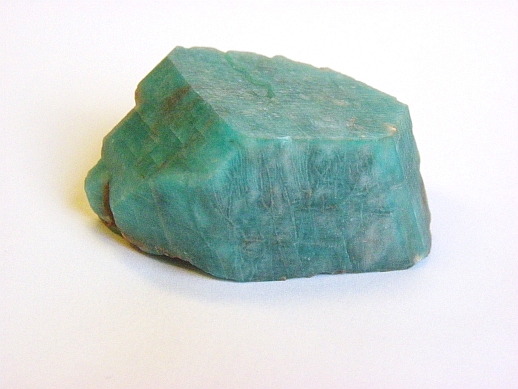
Anne
M. Hofmeister and George
R. Rossman
Division of Geological and Planetary Sciences, 170-25,
California Institute of Technology,
Pasadena, California 91125, U.S.A.
Irradiation-induced color in amazonite can develop only in potassium feldspar having both structurally bound H2O and Pb impurities. Amazonite color is controlled by either (1) an absorption minimum in the beta spectrum between three overlapping bands in the ultraviolet and a broad band at 625 to 643 nm, resulting in a blue color, (2) a combination in beta of one UV band and a broad band at 720 nm, resulting in a green color, or (3) both of the above superimposed, resuliting in a blue-green color. All optical variations correlated with an EPR pattern indicative of Pb3+ or Pb1+. The different types of color are associated with a limited range in Pb content and structural state. For constant Pb content, the intensity of color is linearly related to the amount of structurally bound H2O, up to a limiting value. Dependence of color intensity on both Pb and H2O cencentration strongly suggests that lead and water occur in a 1:1 ratio in the color centers. The first order reaction kinetics of amazonite color formation by irradiation and the observbation that water is not consumed in the process suggests that water plays a catalytic role in the irradiative transformation of Pb2+ to the amazonite chromophore.

Amazonite feldspar from the Crystal Peak mining district, Teller County, Colorado